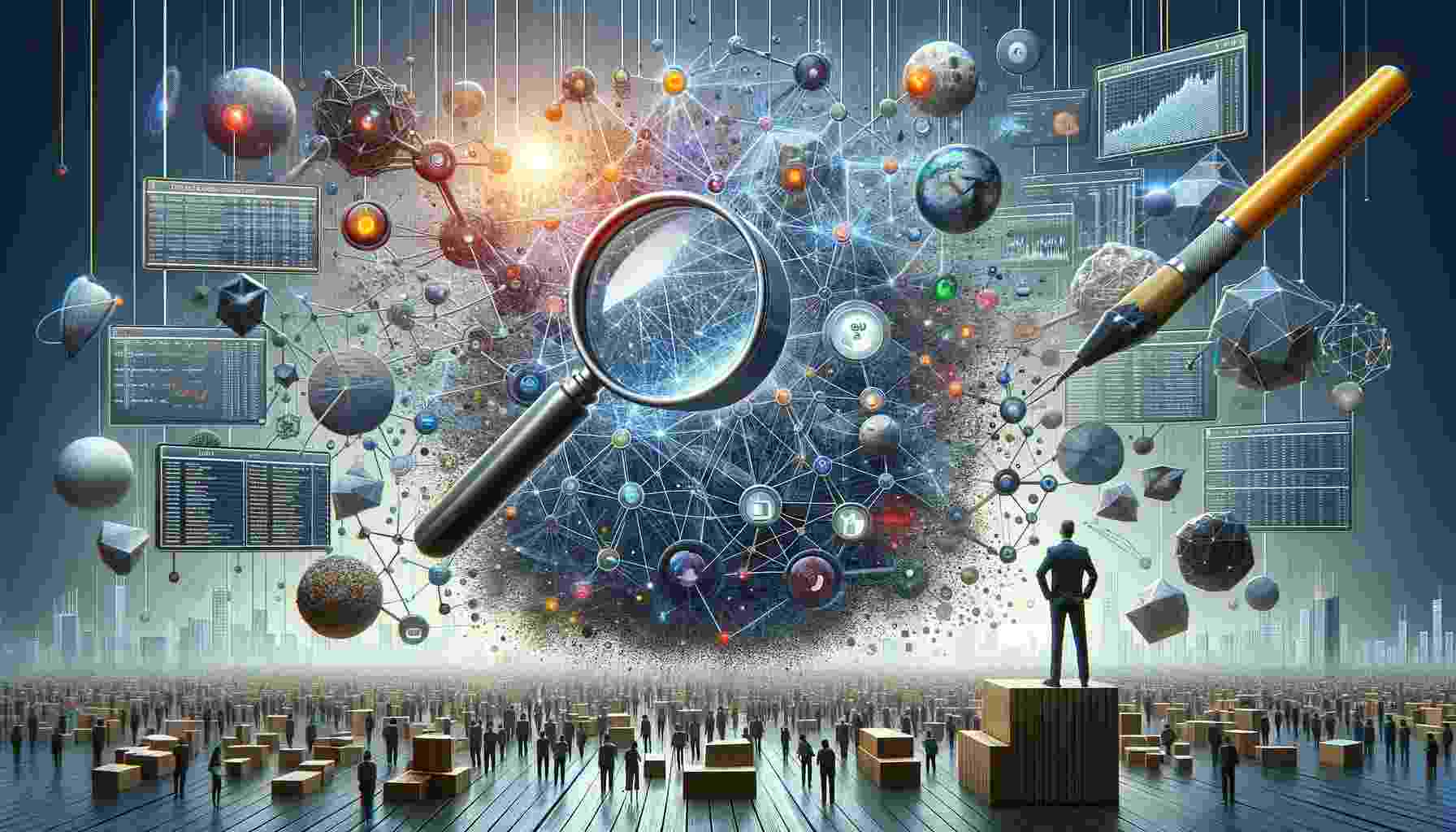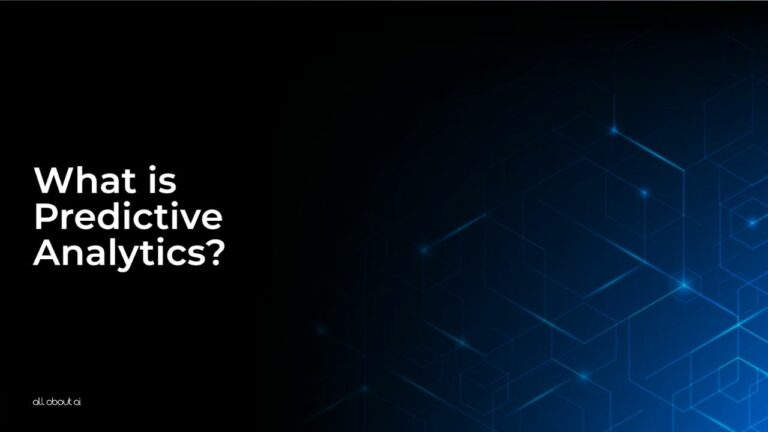In the vast and dynamic landscape of Artificial Intelligence (AI), Predictive Analytics emerges as a pivotal tool. It’s a sophisticated technique that combines historical data with statistical algorithms and machine learning to forecast future events.
This method is not merely about predicting the future; it’s about making informed decisions today based on data-driven insights.
Looking to learn more about predictive analytics? Keep reading this article written by the AI enthusiasts at All About AI.
How Does Predictive Analytics Work?
Here’s a breakdown of how predictive analytics works.
Step 1: Data Collection
The first step in predictive analytics is gathering data from various sources. This data could include historical records, real-time data feeds, and publicly available information. The quality and quantity of this data play a critical role in the accuracy of the predictions.
Step 2: Data Cleaning and Preparation
Once collected, the data must be cleaned and prepared for analysis. This involves removing inconsistencies, handling missing values, and ensuring the data is formatted correctly. This step is crucial for the reliability of the predictive models.
Step 3: Data Analysis and Pattern Recognition

The prepared data is then analyzed to identify patterns and trends. Statistical methods and algorithms are used to explore the data, uncovering underlying structures and relationships. This step is essential for understanding the factors that influence future outcomes.
Step 4: Model Building and Training
Next, predictive models are developed using machine learning algorithms. These models are trained on the historical data, allowing them to learn and adapt to the patterns identified in the previous step.
Step 5: Validation and Testing
The models are then validated and tested to ensure their accuracy and effectiveness. This involves using a separate set of data to evaluate the model’s predictive capabilities and fine-tuning the model as necessary.
Step 6: Deployment and Monitoring
Finally, the validated models are deployed for practical use. Continuous monitoring is essential to ensure they remain accurate over time, and adjustments are made based on new data and changing conditions.
Types of Predictive Analytical Models:
This segment explores various predictive analytical models, dissecting their functionalities and diverse applications.
Classification Models:
Classification models predict categorical outcomes. They are used to classify data into predefined classes or groups. For example, in finance, these models might categorize loan applicants as ‘high risk’ or ‘low risk.’
Regression Models:
Regression models are used to predict continuous numerical outcomes. They are essential in fields like sales forecasting, where the goal is to predict quantities or prices.
Clustering Techniques:
Clustering involves grouping data points with similar characteristics. It’s widely used in market segmentation, where customers with similar buying behaviors are grouped for targeted marketing strategies.
Time Series Analysis:
This model focuses on analyzing sequences of data points, typically time-ordered, to forecast future points in the series. It is prevalent in stock market analysis and economic forecasting.
Key Applications of Predictive Analytics:
Let’s take a look at predictive analytics’ impact across sectors like finance, entertainment, and healthcare, revealing its transformative role.

Finance:
In finance, predictive analytics is used for risk assessment, fraud detection, and credit scoring, helping financial institutions make informed lending decisions and identify fraudulent activities.
Entertainment:
The entertainment industry uses predictive analytics to recommend content to users, optimize streaming quality, and predict box office success based on audience preferences and viewing habits.
Marketing:
In marketing, predictive analytics helps in customer segmentation, targeted advertising, and predicting customer behavior to tailor marketing strategies effectively.
Manufacturing:
Manufacturing industries utilize predictive analytics for predictive maintenance, supply chain management, and optimizing production processes, leading to reduced downtime and increased efficiency.
Healthcare:
Healthcare leverages predictive analytics for patient risk assessment, treatment optimization, and predictive diagnostics, greatly enhancing patient care and operational efficiency.
Benefits of Predictive Analytics in Business:
This part of the article focuses on the pivotal benefits of predictive analytics in enhancing business decisions and operations.
Enhancing Decision-Making Processes:
Predictive analytics provides data-driven insights that aid in making informed decisions, reducing risks, and identifying new opportunities.
Improving Customer Experiences:
By predicting customer preferences and behaviors, businesses can offer personalized experiences, improving customer satisfaction and loyalty.
Increasing Operational Efficiency:
Predictive analytics helps in optimizing operational processes, reducing costs, and improving overall efficiency by forecasting future trends and demands.
Challenges and Limitations of Predictive Analytics:

However, predictive analytics is not without challenges. Here are a few of them.
Data Quality and Quantity:
The accuracy of predictive analytics is heavily dependent on the quality and quantity of the data used. Poor data quality can lead to inaccurate predictions.
Model Complexity and Interpretability:
Complex models can be difficult to interpret, making it challenging to understand and explain the basis of predictions.
Data Privacy and Security:
Handling large volumes of data raises concerns about privacy and security, especially with sensitive personal and financial information.
Changing Conditions and Real-Time Adaptability:
Predictive models may become outdated as conditions change. Maintaining their accuracy over time requires constant monitoring and adaptation.
Bias and Ethical Concerns:
There is a risk of bias in predictive models, which can lead to unfair or unethical outcomes, especially if the training data is biased.
Want to Read More? Explore These AI Glossaries!
Embark on a journey into artificial intelligence with our specially curated glossaries. Whether you’re a novice or a seasoned scholar, there’s always something fresh to absorb!
- What Is Artificial Intelligence Markup Language?: Artificial Intelligence Markup Language (AIML) is a dynamic XML-based scripting language tailored for crafting responsive and interactive conversations in AI applications.
- What is Artificial Intelligence?: Artificial Intelligence (AI) involves creating algorithms and models that empower computers and machines to perform tasks typically associated with humans and their level of intelligence.
- What is an Artificial Immune System?: Artificial Immune System (AIS) refers to a computational framework inspired by the biological immune system.
- What is Artificial General Intelligence?: Artificial General Intelligence is characterized by its ability to understand, learn, and apply knowledge in various domains, showcasing adaptability comparable to human intelligence.
- What is an Argumentation Framework?: An argumentation framework is a structured representation of arguments and their relationships, used to model and analyze reasoning processes in AI systems.
FAQs
What is predictive analytics in AI?
What is meant by predictive analytics?
What are the limitations of predictive analytics in AI?
How do you prove predictive analytics?
Conclusion
Predictive Analytics in AI is more than a futuristic tool; it’s a present-day necessity for informed decision-making and strategic planning. While it comes with challenges, the potential it holds in transforming how we approach data and decision-making is immense.
This article provided an answer to the question, “what is predictive analytics.” If this topic piqued your interest about the ever-evolving world of AI, check out the other articles we have in our AI Definitions Index.





